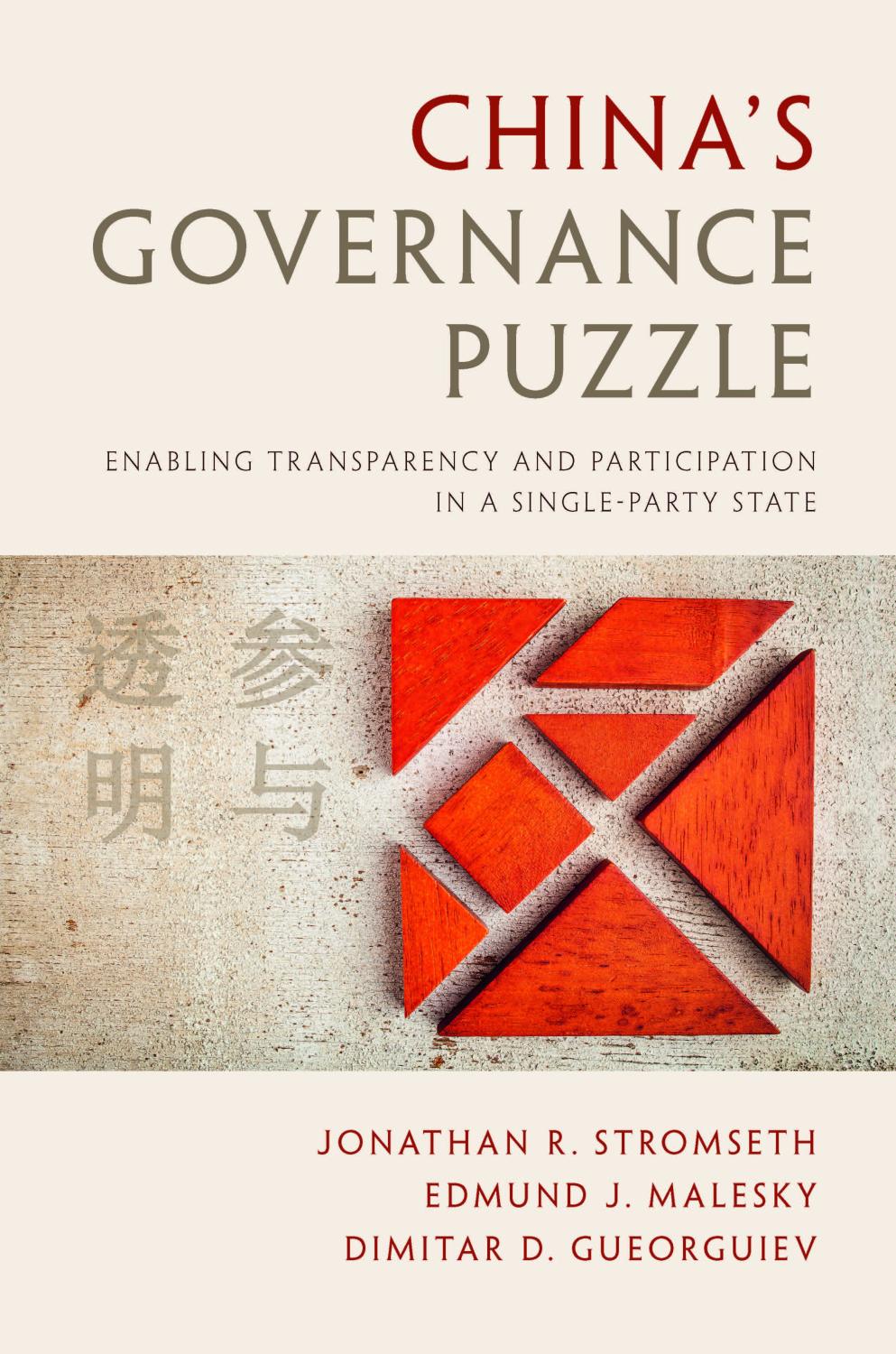China is widely viewed as a global powerhouse that has achieved a remarkable economic transformation with little political change. Less well known is that China’s leaders have also implemented far‐reaching governance reforms designed to promote government transparency and increase public participation in official policymaking. What are the motivations behind these reforms and, more importantly, what impact are they having? This puzzle lies at the heart of Chinese politics and could dictate China’s political trajectory for years to come.
This extensive collaborative study not only documents the origins and scope of these reforms across China, but offers the first systematic assessment by quantitatively and qualitatively analyzing the impact of participation and transparency on important governance outcomes. Comparing across provinces and over time, the authors argue that the reforms are resulting in lower corruption and enhanced legal compliance, but these outcomes also depend on a broader societal ecosystem that includes an active media and robust civil society.
Additional information about the book can be found here.
Praise for China’s Governance Puzzle
“This illuminating volume changes the way you think about the role of information in China. The authors make a powerful case that, even amid tight political control, transparency is altering China’s government, with deep implications for the economic and political future.”
—Evan Osnos, National Book Award-winning author of Age of Ambition: Chasing Fortune, Truth, and Faith in the New China
“[This] excellent new book, China’s Governance Puzzle, provides the most comprehensive account to date on the effects of the Party’s recent efforts to enhance transparency (i.e. Open Government Information regulations) and public participation (expert consultations, notice and comment processes, public hearings). The argument, in a sentence, is that we should be taking these reforms seriously.”
—Rory Truex, Assistant Professor of Politics and Public Affairs at Princeton University
“The authors skillfully blend the latest statistics on corruption with illuminating case studies to argue that enlisting the Chinese public to monitor the bureaucracy would yield better results than continuing the current heavy-handed crackdown that targets corrupt individuals one at a time.”
—Yuen Yuen Ang, Assistant Professor of Political Science at the University of Michigan
“This is a highly rigorous yet very readable study of how authoritarian governance in China works and does not work to achieve policy objectives and maintain domestic stability. The authors bring to bear a rare combination of practical on-the-ground experience and formal academic training to analyze one of the Chinese Communist Party’s greatest dilemmas: how to improve governance and bolster state legitimacy by allowing popular opinions to be heard in the policy process without ever hinting that the broad public will or should gain direct control over who governs or how.”
—Thomas Christensen, Professor of Public and International Affairs and Director of the China and the World Program at Columbia University
Reviews
- Greg Distelhorst, review of China’s Governance Puzzle in The China Journal 82 (July 2019).
- Lowell Dittmer, review of China’s Governance Puzzle in Journal of Chinese Political Science 23 (July 2018).
- Joseph Fewsmith, review of China’s Governance Puzzle in Political Science Quarterly 133, no. 1 (Spring 2018).
- Rory Truex, review of China’s Governance Puzzle in The China Quarterly 236 (December 2018).
- Yuen Yuen Ang, review of China’s Governance Puzzle in Foreign Affairs (November/December 2017).
Authors


